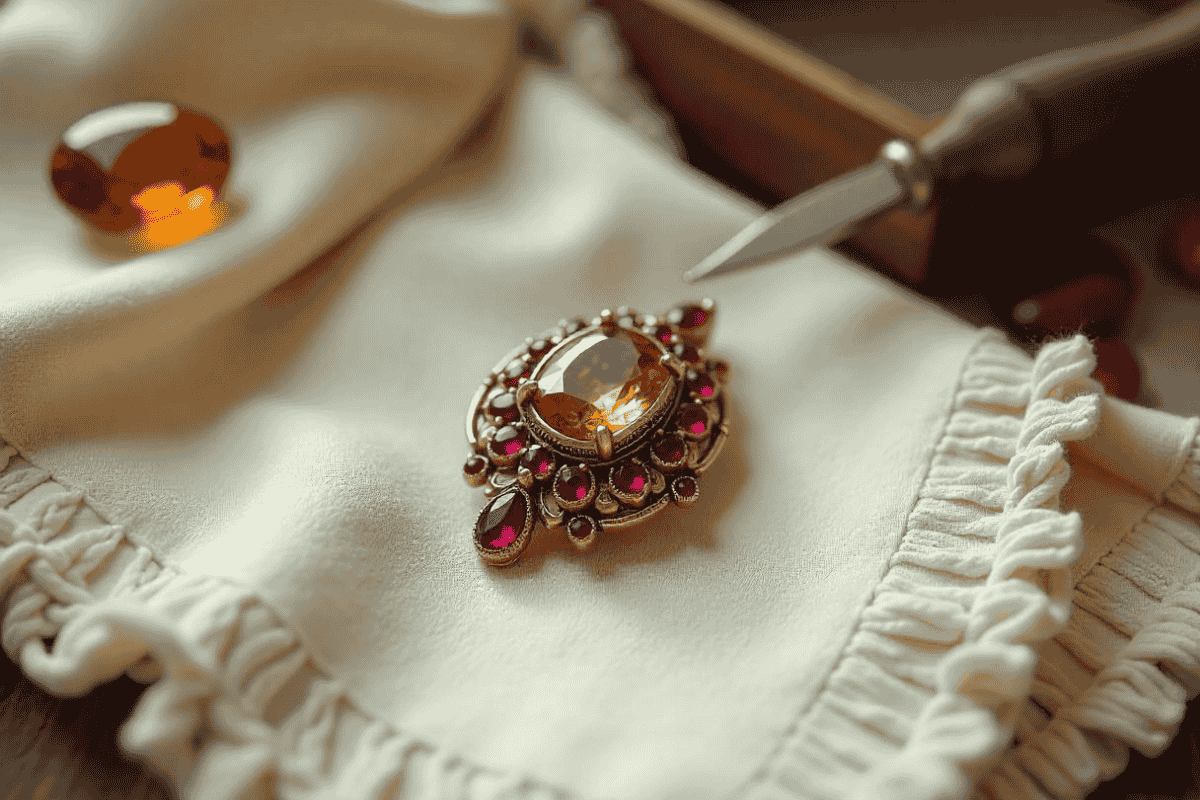Vintage jewelry holds a unique allure, drawing us into a world of elegance and history. For lovers of antique fashion, owning a piece of vintage jewelry is more than just accessorizing—it’s about carrying a piece of history with you. But how can you ensure the jewelry you’re buying is truly vintage, and how can you care for these delicate treasures? In this guide, we’ll explore everything you need to know about vintage jewelry, from identifying authentic pieces to ensuring they last for generations.
The Evolution of Vintage Jewelry: A Journey Through Time
Vintage jewelry offers a tangible connection to the past, showcasing the craftsmanship and styles of bygone eras. Each period in history left its own mark on jewelry design, from the romanticism of the Victorian era to the bold geometric patterns of the Art Deco movement.
Victorian Era (1837-1901): Sentimental Elegance
Key Characteristics:
Intricate and symbolic designs often representing love, mourning, or faith.
Use of materials such as gold, pearls, and colorful gemstones like garnets.
Common designs included lockets with mementos, such as hair or portraits.
Pro Tip: Look for engraved messages or sentimental motifs for authenticity.
Art Nouveau (1890-1910): Nature-Inspired Beauty
Key Characteristics:
Designs inspired by plants, animals, and the female form.
Materials like enamel, glass, opals, and moonstones were common.
Fluid and asymmetrical patterns defined this era.
Pro Tip: Authentic pieces often exhibit delicate craftsmanship, especially in enamel work.
Art Deco (1920-1935): Bold and Geometric
Key Characteristics:
Clean lines, geometric shapes, and contrasting materials.
Frequent use of platinum, diamonds, and colored gemstones.
Eye-catching, symmetrical designs reflecting the Roaring Twenties.
Pro Tip: Look for hallmarks indicating platinum and quality craftsmanship.
For more vintage-inspired jewelry options, explore our guide to friendship bracelet sets for gifting.
How to Identify Authentic Vintage Jewelry
Spotting genuine vintage jewelry can be a challenge, especially with so many reproductions on the market. Here are a few steps to help you identify the real deal:
1. Check the Hallmarks and Stamps
Hallmarks provide information about the metal content, country of origin, and maker.
Common stamps include “925” for sterling silver or specific maker’s marks.
Familiarize yourself with hallmark guides for different periods.
2. Look for Signs of Wear
Authentic vintage pieces often show:
Slight tarnishing on metal surfaces.
Wear on the edges or clasps.
Be cautious of jewelry that looks too new; it might be a reproduction.
3. Study the Craftsmanship
Handmade pieces often have slight irregularities in design.
Pay attention to:
Intricate engravings.
Settings and clasps that indicate handwork rather than machine production.
4. Research the Era
Learn about different jewelry styles and materials popular in specific periods.
Compare your piece to references from trusted sources or museums.
For culturally inspired designs that reflect your personal style, check out this guide.
Caring for Your Vintage Jewelry Collection
Preserving the beauty of vintage jewelry requires proper care. Follow these tips to keep your treasures in pristine condition:
Storage Tips
Store in a dry, safe place:
Moisture can cause metals to tarnish and gemstones to lose their luster.
Use velvet-lined boxes or anti-tarnish pouches for protection.
Avoid direct sunlight:
Prolonged exposure can fade gemstones and damage delicate materials.
Cleaning Tips
Clean gently and sparingly:
Use a soft, dry cloth to remove dirt and oils.
For deeper cleaning, use a mild soap and water solution, but avoid submerging delicate pieces.
Avoid harsh chemicals:
Never use abrasive cleaners or ultrasonic machines on vintage jewelry.
Ensure pieces are thoroughly dried before storage.
Regular Inspections
Inspect frequently for:
Loose clasps, damaged settings, or worn chains.
Missing gemstones or other signs of wear.
Seek professional repairs:
Take damaged pieces to a jeweler experienced in working with antique jewelry.
Why Vintage Jewelry Is the Ultimate Collectible
1. Sustainability and Slow Fashion
Choosing vintage jewelry promotes:
Sustainability by reducing waste.
Preservation of craftsmanship and artistry.
It’s a stylish way to support the slow fashion movement.
2. Emotional Connection to the Past
Vintage jewelry often carries stories of:
Family heritage, passed down through generations.
Personal milestones, making each piece uniquely meaningful.
Owning vintage jewelry connects you to history in a deeply personal way.
3. Unique and Timeless Style
Vintage jewelry stands out in a sea of mass-produced items:
Each piece is one-of-a-kind, showcasing distinctive designs.
The craftsmanship ensures lasting quality and elegance.
Conclusion
Vintage jewelry offers a beautiful connection to the past, bringing timeless elegance into the present. Whether you’re a seasoned collector or just beginning your journey, understanding how to identify and care for these treasures is key to preserving their beauty.
At VeloriaBijoux, we celebrate the art of vintage jewelry, helping you find pieces that resonate with history, craftsmanship, and timeless style. Explore our vintage-inspired collections and discover a story waiting to be told.
How should I care for and store vintage jewelry?
To preserve vintage jewelry, store it in a dry, safe place away from direct sunlight, preferably in velvet-lined boxes or anti-tarnish pouches. Clean gently with a soft, dry cloth and avoid harsh chemicals. Regular inspections for signs of wear or damage are also recommended.

